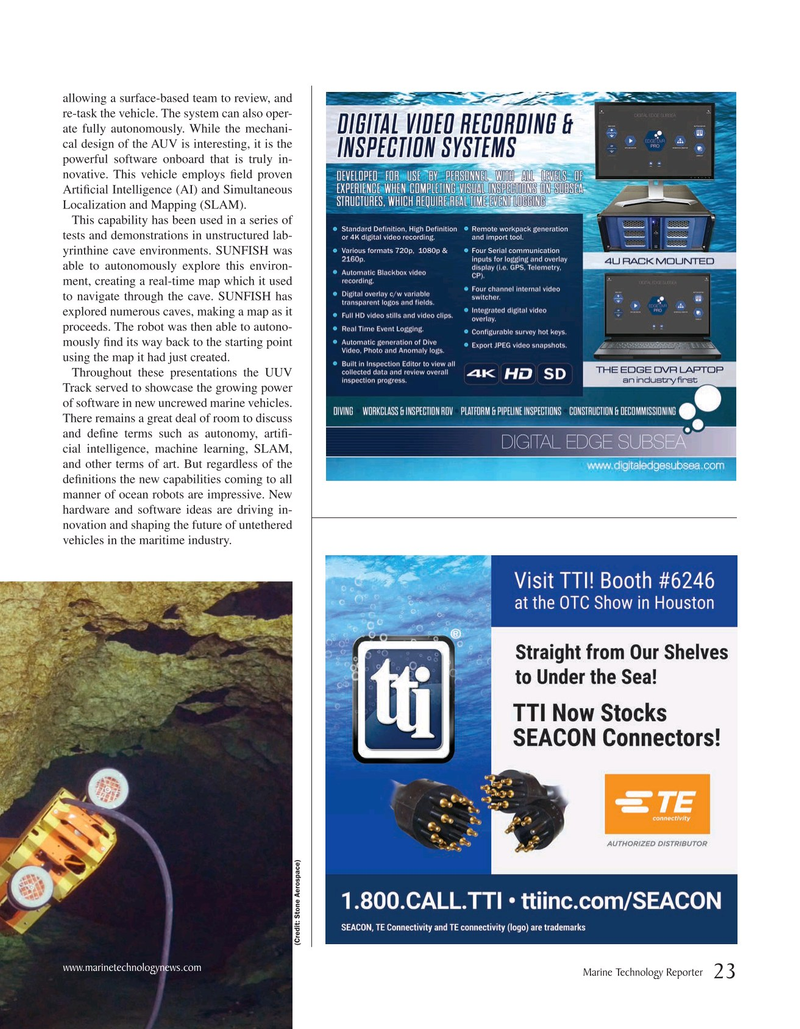
Page 23: of Marine Technology Magazine (April 2020)
Read this page in Pdf, Flash or Html5 edition of April 2020 Marine Technology Magazine
allowing a surface-based team to review, and re-task the vehicle. The system can also oper- ate fully autonomously. While the mechani- cal design of the AUV is interesting, it is the powerful software onboard that is truly in- novative. This vehicle employs feld proven
Artifcial Intelligence (AI) and Simultaneous
Localization and Mapping (SLAM).
This capability has been used in a series of tests and demonstrations in unstructured lab- yrinthine cave environments. SUNFISH was able to autonomously explore this environ- ment, creating a real-time map which it used to navigate through the cave. SUNFISH has explored numerous caves, making a map as it proceeds. The robot was then able to autono- mously fnd its way back to the starting point using the map it had just created.
Throughout these presentations the UUV
Track served to showcase the growing power of software in new uncrewed marine vehicles.
There remains a great deal of room to discuss and defne terms such as autonomy, artif- cial intelligence, machine learning, SLAM, and other terms of art. But regardless of the defnitions the new capabilities coming to all manner of ocean robots are impressive. New hardware and software ideas are driving in- novation and shaping the future of untethered vehicles in the maritime industry. (Credit: Stone Aerospace) www.marinetechnologynews.com
Marine Technology Reporter 23

 22
22

 24
24
